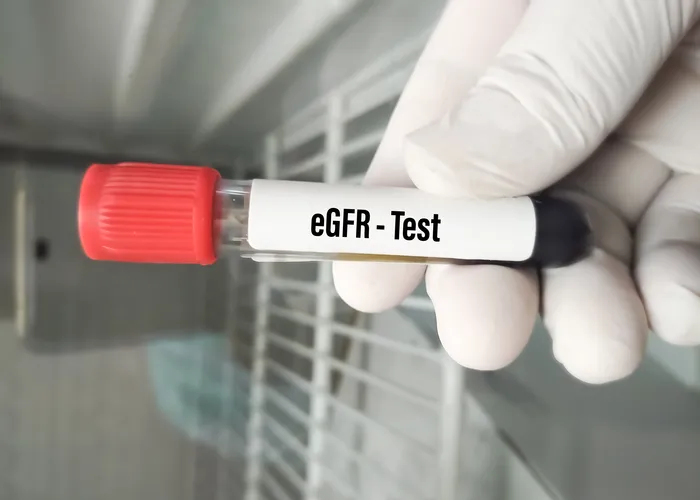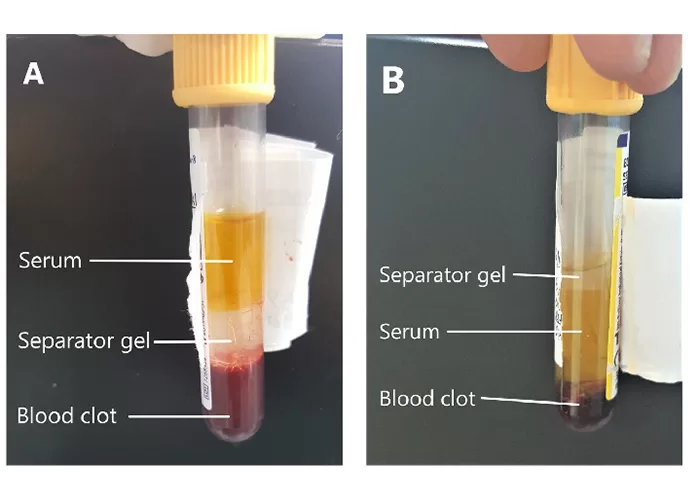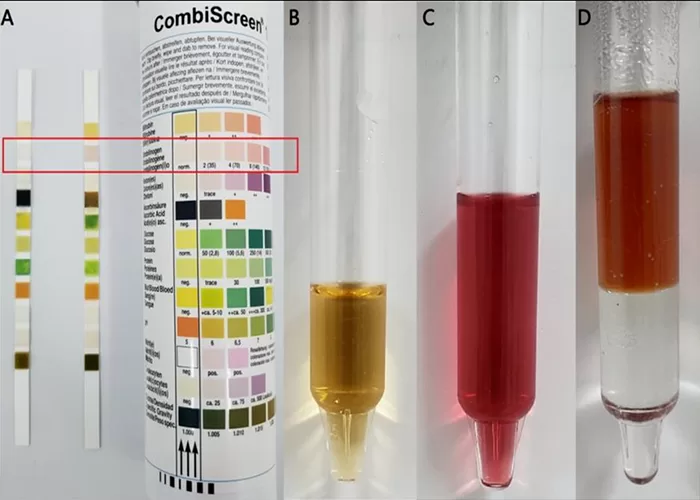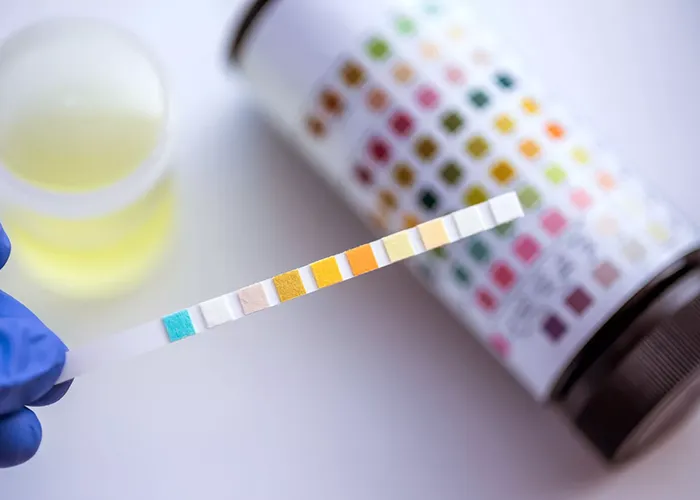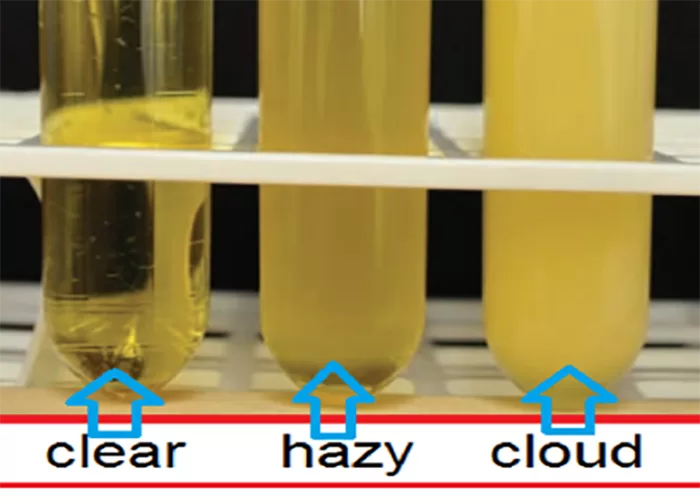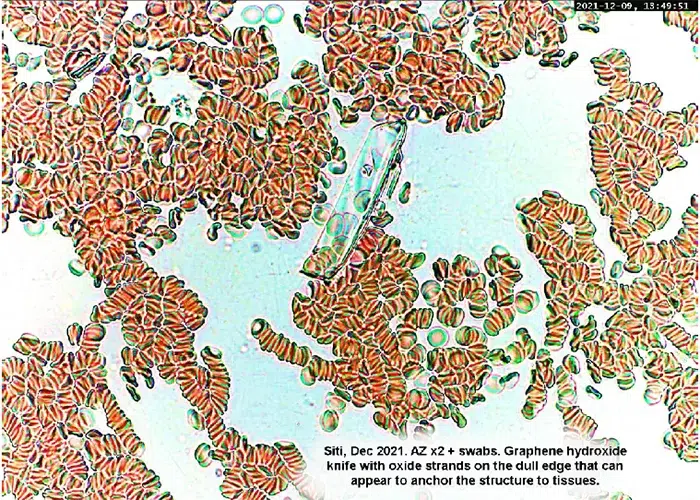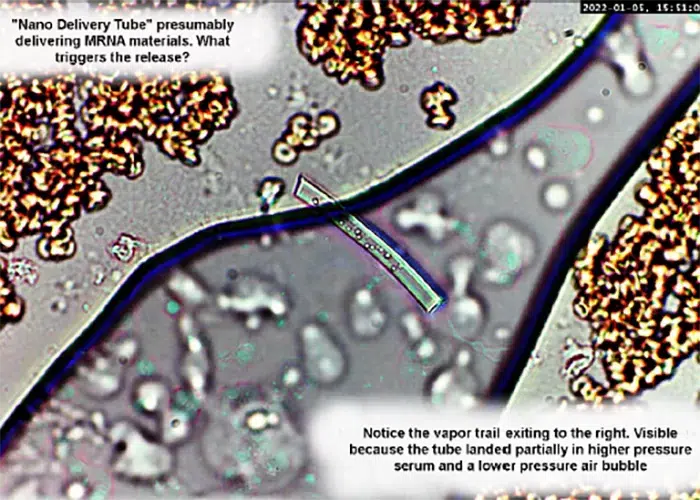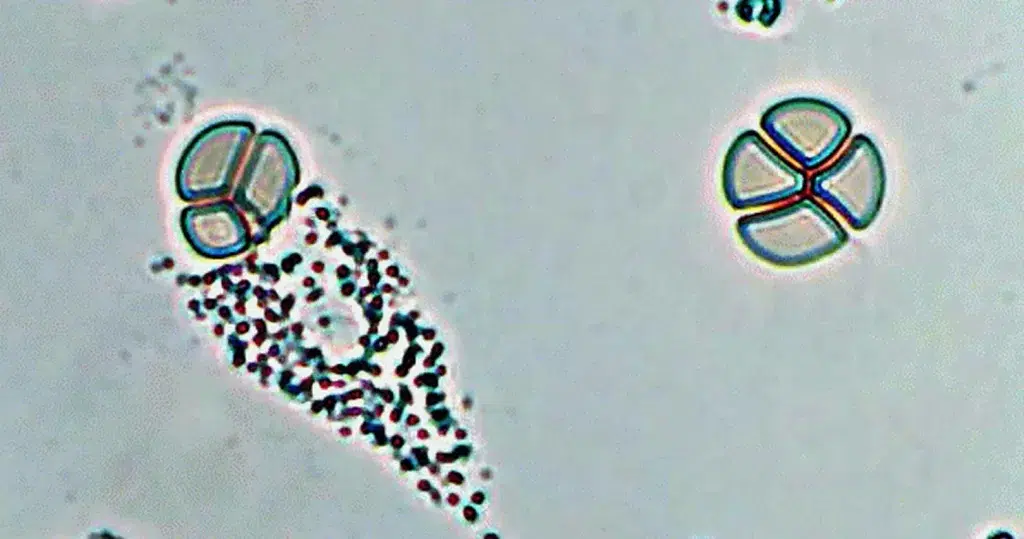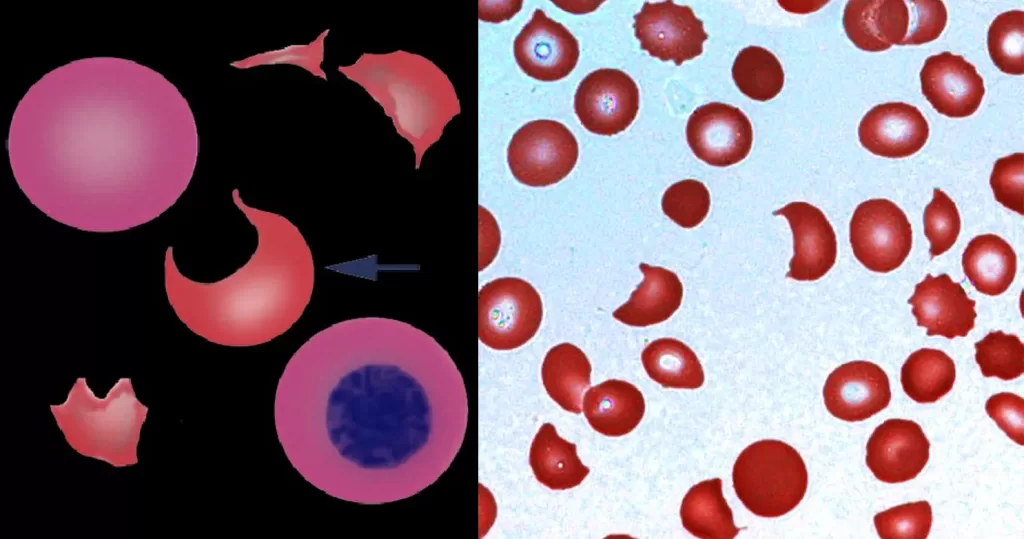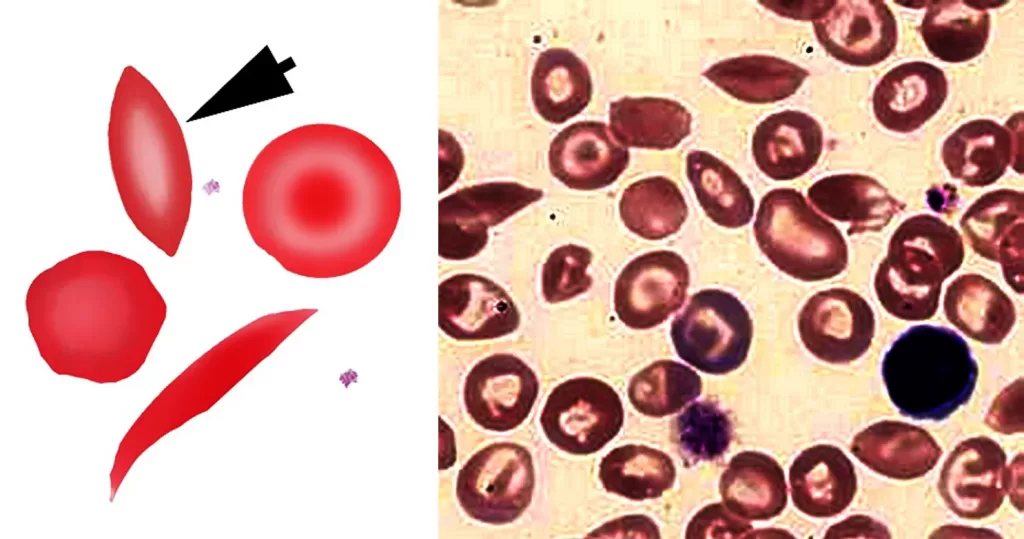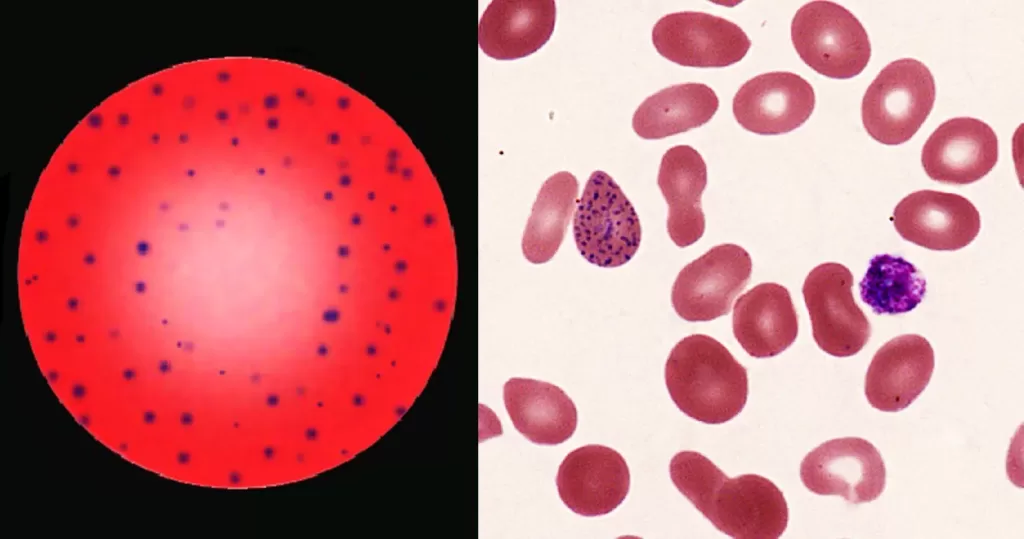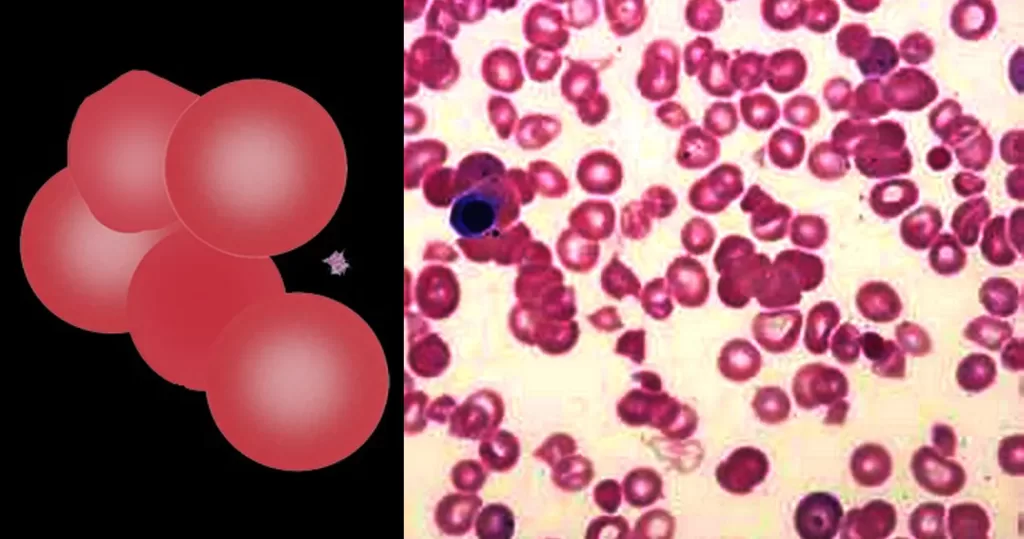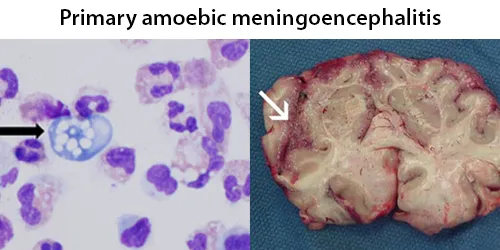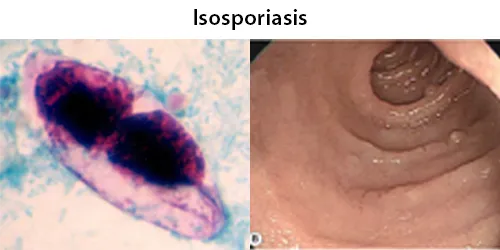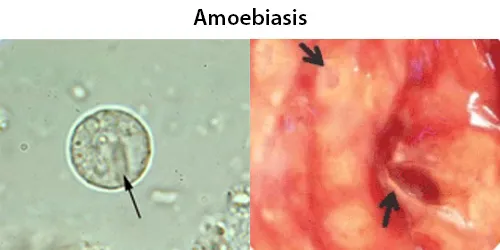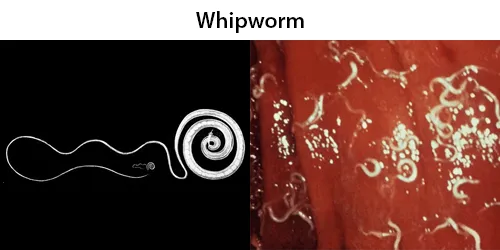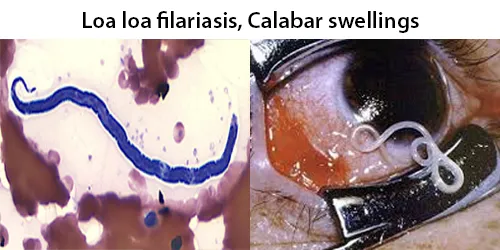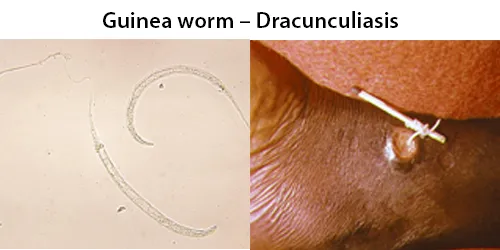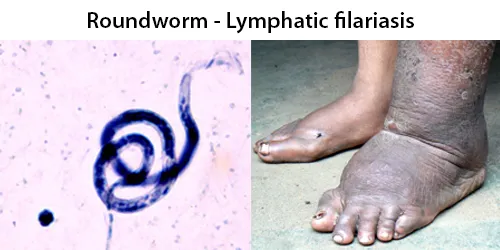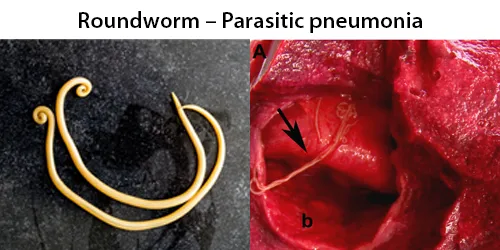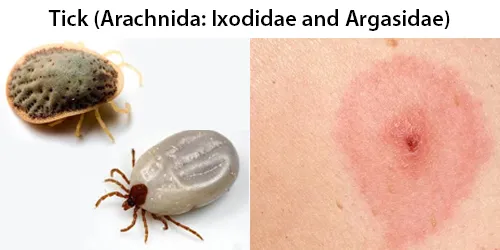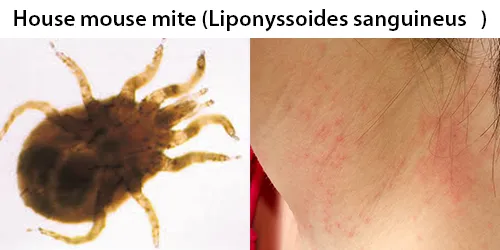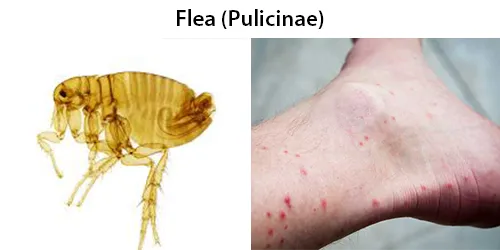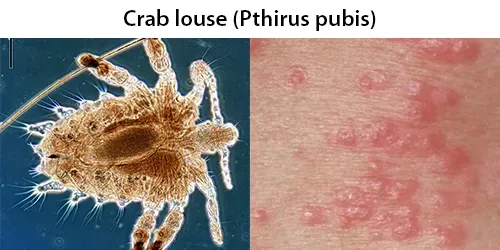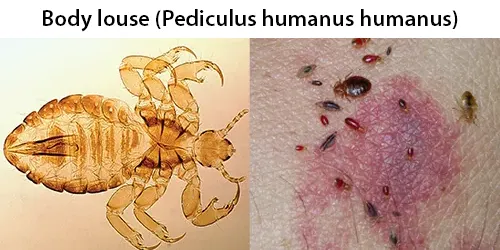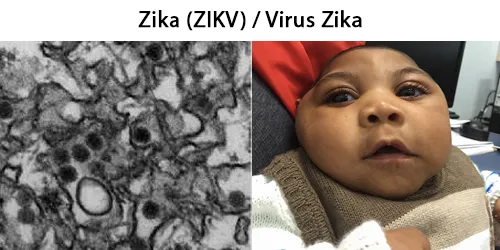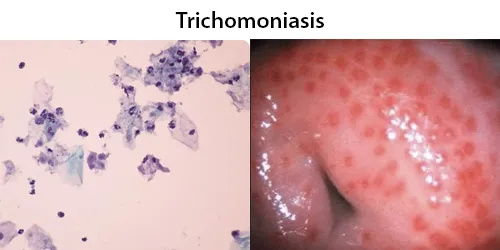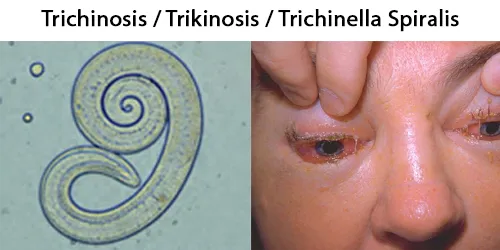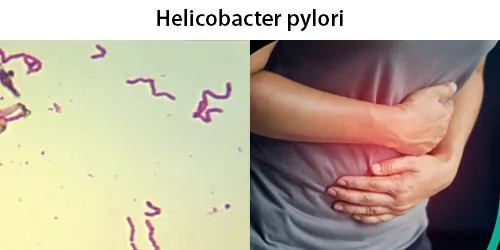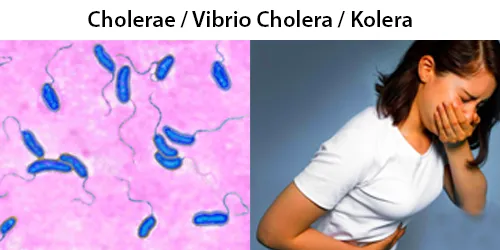How to Detect and Treat a Parasitic Infection
Parasitic
[Ken Adachi Note: Dr. Hulda Clark will eventually be acknowledged by history as one of the greatest medical sleuths of the modern era for her recognition of the pivotal role which parasites play in all disease conditions. I did not realize that Andreas Kalcker had a web site until I recently watched a few videos that he and Kerri Rivera had made in 2014 at an autism conference where he made reference to his web site. Once I found it, I was delighted to find this gem on getting rid of parasites with simple home remedies. Andreas made an important speculation in one of his videos that the reason that some vaccinated children get autism and others don’t may be the degree and extent of the vaccine’s complex inter reaction with parasites in the child’s body (as all kids with autism are loaded with parasites, that once removed, results in a kid without the symptoms of autism). 90% of the world’s population has parasites (including you) and most of us don’t know it because we don’t see any outward signs of the parasite’s presence – except the asthma, or fatigue, or bloating, or diabetes, etc. As you will learn below, it’s not difficult to remove parasites using the inexpensive natural remedies recommended, although you may have to keep at it for 6 months to a year until all of your parasites (and their eggs) are completely removed. Re-infection can happen easily, so we have to keep up a maintenance schedule for the rest of our lives if we want to enjoy a parasite-free (and healthier) existence. You won’t discover how many parasites are in your body until you make the effort to take the herbal remedies described and see the evidence yourself in the toilet bowl. Once that happens, you’ll be on your way towards a healthier and happier you because you now know what you have to do. I took the liberty to slightly tweak the English and added some links to make it easier to find the parasite remedies online. Parasitic
http://andreaskalcker.com/en/health/parasite/116-parasite.html
Version 1.1 Revision 1.02 Copyright 2012

Various tapeworms. Top left is a photo of shorter worms from a 14-year-old girl. Top right is a tape worm several meters long. Bottom left and right are photos of the digestive center of parasite worm.
Parasitic infections are very common, more than you think, and they may or may not cause us serious health complications. We could suffer from various types, depending on the size of the parasite or whether they are inside or outside the body. There are microparasites such as malaria that are only visible under the microscope or large macroparasites, such as roundworms or flat intestinal worms (tapeworms) that can reach great sizes. Parasites are not only found in the intestine, as is generally thought, but anywhere in the body: the lungs, liver, muscle, stomach, brain, blood, skin and even in the eyes.
The great migratory movements of population, rapid transportation, and trading, have shortened the distances and diseases that used to be common localized diseases, but now turned into universal common ailments and vice versa. Parasites previously confined to very specific areas, now appear in other locations far away from their initial focus. This situation is favored by the socioeconomic conditions of the masses of people on the planet. A high percentage of the world’s population suffers from infections by parasites, which are responsible for the death of 15 million children annually.
To this situation we can add the fact that the parasites have developed multiple mechanisms of evasion and resistance to specific immunity, which allows them to circumvent and cancel the host immune response, resulting in chronic and persitent infections. The persistence of parasites in human hosts leads to chronic immune reactions that can damage tissue and cause alterations in immune regulation.
Ninety percent (90%) of the world population is infected with one or more parasites in their body, being able to coexist in the same host with up to five different types. The danger comes when the balance is upset, within the host, skyrocketing the number of parasites and the host starting to show signs of serious illness and even death in some cases. Parasitic infections caused by parasitic worms do not always cause disease in man, a number of carriers have been found who are fully healthy. Parasites are silent murderers claiming unsuspecting victims living in a people world that does not even imagine they exist.
Doctors in Western Europe and the U.S. do not contemplate the possibility that we may be infected with parasites, but with modern circumstances like the immigration of people across continents, the problem has become much more common than anyone can imagine and often parasites are causing many of the rare diseases, or other conditions such as chronic fatigue, fibromyalgia or arthritis that are causing so much damage lately in our communities.
The most common Vermiosis are intestinal. People who have them lose large quantity of nutrients, which are absorbed by the parasite, while erosions that originate in the digestive tract can be the gateway to various infections. Intestinal worm infections are very common and affect many, not only people with dirty and poor hygiene habits. Worms are parasites that are transmitted by ingesting eggs produced by the parasites themselves. These eggs hatch in the intestinal tract.
A parasitic infection can be acquired through one or more of these scenarios:
– From someone else, more or less direct contact (by faeces or sexual).
– From self-infection, for example, in the anal-hand-mouth way because the scratching of the anal area can drag the eggs.
– From congenital transmission (mother to fetus).
– From common contaminated objects .
– From from soil contaminated by human or animal excrement [E.g. cat litter box].
– From eating contaminated raw or undercooked meat.
– From eating raw fish.
– The traditional foods of some countries include it in their recipes. We can avoid consumption of the larvae of worms by freezing the meat or the fish for twelve hours. [Seen note 1 at end of document].
– From drinking contaminated water
– From contaminated vegetables or fruits:Many times we eat poorly washed vegetables or fruits. There is a misconception when we think that vegetables from organic farming are free from any problems, pesticides or chemicals. The danger is that the eggs or larvae of the worms reach the ground through animal waste and decomposed forms of natural compost and manure in the field. There are eggs, such as Ascaris, which can survive in soil under extreme temperatures for as long as five years. It is very important to perform a thorough cleaning of fruits and vegetables; and never eat anything raw, straight from the ground, however healthy it may seem.
– From parasitized animals:
Infections are very easy to spread by contact with pets. Veterinarians can’t insist enough about the quarterly worming of our animals, but there are steps we must take on our own to avoid contamination.
De-worming your pet at least every three months for life, as directed by your veterinarian during the first month, should be done every week.
Prevent pets from eating raw viscera. If animals eat raw meat or raw bones the best option is to freeze the food in advance for twelve hours. After deworming the animal, their feces must be destroyed during the 8 days of treatment. It can be burned and buried. If the treatment is working, the animal would be, expelling the worms throughout the faeces or vomit. Avoid being licked in the mouth by the animal as these are in direct contact with feces, soil and its own anus. When petting an animal, wash your hands with soap and water before eating or handling food, as the eggs of the parasites remain in the animal’s hair.
– Do not walk barefoot or with open toe shoes in soil, wet soil or sand.
Symptoms of parasitic infections
The different types of worms and toxic waste produced by parasites in our organism may cause the following widespread problems:
-
- Chronic diarrhea or diarrhea caused by poor absorption of food
- Chronic Constipation
- Gas and bloating (Important after meals)
- Digestive problems
- Excessive bowel movements (Intestinal movement after eating)
- Abdominal pain.
- Mucus in stool
- Leaky gut
- Frequent vomiting and nausea
- Hemorrhoids
- Burning in the stomach
- Blood in stool
- Intestinal irritation
- Intestinal obstruction
- Swollen eyes
- Fever
- Pancreatitis
- Malabsorption syndrome
- FATIGUE The toxic waste metabolic overload overworks the organs of elimination and causes central nervous system disorders like:
- Chronic Fatigue Syndrome
- Low energy
- Lethargy
- Extreme weakness
- Internal cold
- Cold in the extremities
SKIN DISORDERS & ALLERGIES:
Parasites that penetrate the skin cause itching. When the tissue is inflammed by these parasites, white blood cells increase the body’s defense. This reaction causes skin rashes and food allergies are not far away. Parasites also create toxins and the skin, being the largest organ, tries to eliminate them therefore many skin problems are felt. Symptoms include:
- Dry Skin
- Dry Hair
- Brittle hair
- Hair loss
- Allergies
- Itchy nose
- Anal itching
- Itchy skin
- Urticaria
- Jaundice
- Allergic reactions to foods
- Crawling sensation under the skin
- Eruptions
- Eczema
- Skin ulcers
- Swelling
- Sores
MOOD PROBLEMS AND ANXIETY:
Toxins that are released by the parasites can irritate the central nervous system. Anxiety and nervousness often are caused by parasites that run throughout the body. Some of the problems caused are:
- Mood swings
- Anger and irritability
- Nervousness
- Depression
- Forgetfulness
- Confused thinking
- Restlessness
- Anxiety
- Slow reflexes
- Obsession
- Lack of coordination
- Disorientation
SLEEP DISORDERS:
The physical presence of the parasites are a nuisance to the body. The body reacts to them during rest periods, since during the night is when the parasites are most active. Nocturnal awakenings are common, especially between 2 and 3 am, when the liver tries to rid the body from toxins produced by parasites. This in turn produces:
~ Insomnia
~ Grinding of teeth during sleep
~ Bedwetting
~ Drooling while sleeping
~ Sleep disorders multiple awakenings during the night
GROWTH PROBLEMS, WEIGHT AND APPETITE:
The parasites usually live without being detected by the hosts, rob the body of all essential nutrients of the food eaten. Many overweight people who are infected with parasites, go hungry for lack of essential nutrients and this forces them to eat in excess due to parasites. Furthermore, depending on the type of infestation, many people are malnourished and can not gain weight.
Some symptoms are:
- In children, poor growth, physical, age and intelectual development Obsession and compulsion to eat sweets or very specific foods
- Weight gain
- Weight loss
- Long-term obesity
- Loss of appetite or uncontrollable hunger to eat more than usual
- Inability to gain or lose weight
- Muscle and joint pain
Parasites can travel to almost all soft tissues, particularly at the joints and the muscles that cause cysts and inflammation and often get mistaken for arthritis and muscle pain. Toxins from parasites can also accumulate in the joints and muscle tissue causing:
- Muscle spasms
- Muscle pain
- Joint pain
- Muscle cramps
- Numbness of the hands or feet
- Chest Pains
- Pain in the navel
- Pain in the back, thighs or shoulders
- Arthritic pains
- Rapid heartbeat
- Fibromyalgia
- Seizures
BLOOD DISORDERS:
The parasites absorb the good vitamins from the body like iron and sugars, resulting in:
- Hypoglycemia
- Anemia
SEXUAL AND REPRODUCTIVE PROBLEMS:
A weakened immune system because of parasites and their waste can also experience:
- Male impotence
- Erectile dysfunction
- Premenstrual syndrome
- Candida Yeast Infections
- Urinary Tract Infections
- Cysts and fibroid
- Menstrual problems
- Prostate problems
- Fluid retention
RESPIRATORY DISEASE:
The passage of larvae through the respiratory system or larval invasion on the lungs may cause symptoms such as:
- Drowsiness [sleep apnea]
- Shortness of breath or respiratory failure
- Dyspnea [shortness of breath with slight exertion]
- Acute bronchitis
- Asthma
- Pneumonia
- Irritative cough
OTHER PROBLEMS:
- Foreign body sensation in the throat or discomfort
- Difficulty swallowing
- Cough or coughing up blood
- Circulatory problems. numbness in the extremities, difficulty in moving.
- Excess of saliva
- Blurred vision
- Bad breath
- Low immune response
- Fever
- Breathing problems
- Peritonitis
- Chronic symptoms viral or bacterial
- Body odor
PARASITES IN CHILDREN:
We can speak of asymptomatic and symptomatic stages. The former are usually found in adults. Symptomatic stages occur mainly in children, in which we can usually observe: Weight loss, anorexia, growth retardation, headaches, cramping, diarrhea that alternates with periods of constipation, nervousness and irritability, nasal itching and / or anal urticaria. The Tapeworm, because of its size, consumes enormous amounts of food that it obtains from the child’s consumed nutrients. This can affect their normal development.
Treatment is simple, but it requires that the head of the tapeworm is removed, otherwise it will continue its growth.
MEASURES IN THE HOME ENVIRONMENT TO PREVENT REINFECTION:
It is important to treat all people and pets who live in the same environment to prevent that person from infecting others. Reinfection occurs through underwear, bedding, towels and household items such as children’s toys or animals that have been in contact with eggs. It is important to wash parts at a temperature not below 60 C [140 F], including all clothing that has maintained contact with intimate body areas. You have to wash all bed linen and underwear daily (or to the extent possible) while performing antiparasitic therapy. Affected individuals should not share their swimwear with other members of the family and would have to use one cloth to wash his anal area and another one for the rest of the body.
- It is necessary to sleep with underwear and pants if possible to avoid involuntary scratching of the anal area at night, so the eggs will not get under the fingernails. Keep pets away from the place of rest of their owners, such as beds, sofas, blankets and cushions.
- Thoroughly wash fruits and vegetables in water and soaking them in MMS or CDS solution for a few minutes.
- Clean the sink with alcohol as the eggs of many parasites are immune to the pH of the cleaning products such as soap or bleach.
- It is important to note that the parasites do not leave any kind of immunity behind, therefore, once rid of them, the person who has suffered can become reinfected again by exposure to the eggs.
EVOLUTIONARY CICLES OF INTESTINAL PARASITES:
There are many more, but these are the three most common types of intestinal parasites that can be found in developed countries.
ASCARIS LUMBRICOIDES:
In the case of the Ascaris, these worms reproduce easily, and a single female can produce up to 200,000 eggs each day. This parasite is very common, especially in damp conditions and when hygiene measures are not adequate. It can affect the entire opulation, but mostly children, seriously disrupting their development and growth.
[Note: Dr Hulda Clark says on page 43 of her book, The Cure for All Diseases, that “...everyone with asthma tested positive for Ascaris in their lungs” Another Hulda Clark quote from page 43: “What if you always found every mysteriously ill person had some unsuspected parasite or pollutant?“]
Ascaris is so infectious, the World Health Organization estimates there are about 2,000 million [two Billion] people infected worldwide, of which about 20% of ascaaris cases end in death. The eggs of the parasites reach the duodenum through the mouth of the host. Gastric juices digest the egg envelope releasing the larvae. These larvae (which have high mobility) penetrate the duodenal mucosa, going for the liver. They then continue their migration to the heart, reaching the lungs through the pulmonary circulation, reaching the pulmonary capillaries, where they are trapped. There, the larvae break the capillary endothelium penetrating the alveoli, bronchioles and bronchi up through the pharynx. Once the epiglottis is flanked [See note 2], larvae are swallowed, returning again to the duodenum, where they complete their maturation process. This process takes approximately two to three months to complete, therefore we should calculate that to find ourselves completely parasite free the initial treatment should be done for one year. Then you only need to follow a routine de-worming of two to four times a year.
Keep in mind that eggs are expelled with the feces (human or animal) to the environment where they can survive even in harsh conditions, favoring the persistence of the parasite. They are resistant to low and high temperatures, desiccation, strong acids, soaps, chlorine and formaldehyde (pH between 2 and 11) can live in planted soils between 7 and 12 years, creating a hotbed and making them almost indestructible.They get transported through dust flying within the air currents and are inhaled and / or swallowed. From these environments we have recovered eggs from nasal mucus, paper money, potting soil, dust in rooms, etc.
Taenia Saginata and Taenia Solium [tapeworms]:
The taenias reach humans when humans eat their eggs through the tissue of cattle infected and pigs. The larvae encysted in the muscle tissue of the animal is swallowed and their development takes place in the human digestive system. Humans are hosts for T. saginata and T. Solium. The tapeworm is also known as Solitary usually no more than four specimen are found in each individual. The danger of this parasite is that the larvae can migrate to the brain or other vital organs (cysticercosis). It can be detected because as
the parasite grows it is discarding segments that can be seen in the stool. They can usually live in their host for many years in a totally asymptomatic way detected only by the white flat strips in the stool. According to the classification they have a variable size between 2 and 12 meters in length. It consists of a head called scolex, which attaches to the intestine by means of suction cups, and a body consisting of repeating units called proglottids it can reach up to 1,000 or 2,000 proglotids, depending on type. A tapeworm can produce an average of 720,000 eggs per day.
Pinworms (Enterobius vermicularis):
Humans are considered the only host of what are commonly called Pinworms (Enterobius vermicularis). This type of worm is the most typical in the family because of its easy propagation. It is common for children to re-infect over and over in schools or in their games by scratching the anus and introducing the dirty hands in their mouths. Pinworms
have an elongated shape, are whitish and about 1 cm long. They inhabit the large intestine of humans. Females place eggs on the outside, around the anal opening. Once deposited, the eggs are infective for a period of up to 20 days. Once in the intestine, it takes between 5 and 8 weeks to develop into adult worms. The most important symptom is intense itching that occurs in the anal area, especially at night. In women inflammation of the vulvar area is very common . Unlike other parasites, they infect only humans. Eggs are laid between the folds of the anus. Reinfection occurs when infected eggs reach the mouth via our own hands that have scratched the anus. Transmission from person-to-person happens when handling contaminated clothing, bed sheets, towels and environmental surfaces contaminated with pinworm eggs (such as curtains, carpeting) as they are extremely volatile. A
small number of eggs can be integrated into the air and then inhaled and follow the same developing ingested eggs. Enemas are extremely useful in removing this parasite of the large intestine.
Graham’s method is a simple method of detection. Just after waking and before stool, using tape to hold the remains of eggs or parasites which are situated between the anal folds. At first glance we can see small worms no more than an inch, but if we have a microscope, we can see the many transparent eggs from females and even other species.
The importance of lifelong deworming:
Once we begin the process of deworming we should be aware that we must maintain this habit of cleaning for the rest of our lives to enjoy a good and balanced health. It is common among people who have pets, to keep the processes recommended by veterinarians, deworming their pets every three months. It is interesting to ask why family physicians do not advise or alert individuals about the existence of this problem among humans. Maybe we have to consider the possibility that they ignore it or are unaware of the importance to eliminate these harmful pests, as harmful for animals as for people. It is true that many parasites are not endemic or common outside certain climates, but human migration and marketing of food products traveling around the world have propagated the spread of many parasitic pests silently. Each parasite has its own life cycle and involves the development of a parasite during different stages of their life since the beginning of his life until he reaches maturity, reproduces and dies.
In the case of intestinal parasites, which are treated here, they can live in the host for up to ten years, as in the case of a single Taenia, or the entire lifetime of the host, reproducing again and again, as in the case of the Pinworms or the well known Ascaris.
THREE MONTHS DEWORMING PROTOCOL:
During treatment, especially at first, it is completely necessary to use castor oil, a mineral purgative such as Epson salts (contained in Compound VL from BSI) or a preparation of the plant and the leaves of Senna. This treatment is specially designed for the deworming of large parasites, especially round nematodes such as Ascaris. It is effective for most nematodes but may not be effective against tapeworms. In the case of infestation by Tenias the treatment recommended is Niclosamide, being the medication preferred for its low toxicity.
Day 1:
Pyrantel-Pamoate (single dose in the morning) 10 mg / kg, administered as a single dose together with any liquid.
- If purchased in liquid form, a 5ml teaspoon contains 250 mg (for 60 kg three 5ml teaspoons). In tablets take 3 pills for 60 Kg
- Diatomaceous earth (two doses) A dessert teaspoon (5ml) twice daily with meals, preferably with liquid. Morning and afternoon.
Day 2:
- Mebendazole Vermox] (two doses) 100 mg every twelve hours. A pill in the morning and one at night. [ See Note 3 ]
- Diatomaceous earth (two doses) A dessert teaspoon twice daily with meals, preferably with liquid. Morning and afternoon.
- Enema.
Day 3:
- Castor oil, cold pressed, two tablespoons (unflavored from the store) while fasting (See note 4).
- Mebendazole (two doses) 100 mg every twelve hours. A pill in the morning and one at night.
- Diatomaceous earth (two doses) A dessert teaspoon twice daily with meals, preferably with liquid. Morning and afternoon.
- Enema.
Day 4:
- Mebendazole (two doses) 100 mg every twelve hours. A pill in the morning and one at night.
- Diatomaceous earth (two doses) A dessert teaspoon twice daily with meals, preferably with liquid. Morning and afternoon.
- Enema.
Day 5:
- Pyrantel pamoate (single dose) 10 mg / kg, administered as a single dose together with any liquid. In theevent that is purchased in liquid form, a 5ml teaspoon contains 250 mg (for 60 kg three 5ml teaspoons).
- In tablets take 3 pills for 60 Kg
- Diatomaceous earth (two doses) A dessert teaspoon twice daily with meals, preferably with liquid. Morning and afternoon.
- Enema.
Day 6:
- Castor oil, two tablespoons (unflavored from the store) on an empty stomach.
- Mebendazole 100 mg every twelve hours. If in tablet, one in the morning and one at night.
- Diatomaceous earth (two doses) A dessert teaspoon twice daily with meals, preferably with liquid. Morning and afternoon.
- Castor oil, two tablespoons (unflavored from the store) on an empty stomach.
- Enema.
Day 7:
- Mebendazole 100 mg every twelve hours. A pill in the morning and one at night.
- Diatomaceous earth (two doses) A dessert teaspoon twice daily with meals, preferably with liquid. Morning and afternoon and evening.
- Enema.
Day 8:
- Mebendazole 100 mg every twelve hours. A pill in the morning and one at night.
- Diatomaceous earth (two doses) A dessert teaspoon twice daily with meals, preferably with liquid. Morning and afternoon.
- Enema.
Day 9 to 18 (first month):
- Castor oil, two tablespoons (unflavored pharmacy) while fasting. Should be repeated depending on the needs of each person.
- Diatomaceous earth (two doses) A dessert teaspoon twice daily with meals, preferably with liquid. Morning and afternoon.
- Neem Infusion (Azadirachta Indica) organic bulk leaves and as organic neem leaf powder (9 days).Three teaspoons of Neem tea in one liter of water. Boil for 5 minutes and taken throughout the day.
- Enemas as often as possible.
Day 9 to 18 (second month):
- Castor oil, two tablespoons (unflavored pharmacy) fasting. Must be repeated again depending on the needs of each person.
- Diatomaceous earth- A dessert teaspoon twice daily with meals,
preferably with liquid. morning and evening. - Infusion of Epazote (Chenopodium ambrosioides) (3 days) ,
- Boil 1 or 2 tablespoons Epazote leaves per 1 liter of water for 10 minutes, let stand and strain.
- Drink 1 cup fasting for 3 days straight
- The remaining days take the Aloe Vera gel with juice or water while fasting
- Enemas as continuously as possible.
Day 9 to 18 (third month):
- Castor oil, two tablespoons (unflavored pharmacy) fasting. Should be repeated depending on the needs of each person.
- Diatomaceous earth-
- A dessert teaspoon twice daily with meals, preferably with liquid. Morning and afternoon.
- Infusion of Neem. for 9 days or take alternative antiparasitic infusion.
- Enemas as often as practical.
Materials required
Enema of 2 liters:
According to the British Royal Academy of Medicine, 90% of disease and discomfort is directly or indirectly related with the dirty colon. We consider the colon as the sewer of the body and toxins found there infiltrate the blood and seriously impair health. Usually in the colon of adults over 40 years old between 2 and 12 kilos of sediment can be found. In this thick unpurged garbage, large parasites move, poisoning the body of its host slowly but surely. Of the food that reaches the digestive tract, parasites consume most of its good nutrients, often leaving only bites to the host. So while we try to eat healthy by taking vitamins, supplements and other products, we do not get any better. Indeed, sometimes quite the opposite: we feed the parasites.
One of the best methods for elimination of this bulk is called colon hydrotherapy, usually performed by a technician. Even with just using water, a 2-liter enema treatment can help cure many diseases. Used by many cultures since ancient times, it’s an easy and natural way of cleaning the colon gradually. The introduced liquid helps eliminate toxins accumulated in the intestine by the death of the parasites. In the case of a mass death of worms, fever and fatigue may increase, and one may feel quite ill. To prevent toxins from reaching the blood stream, we must empty the lower digestive tract as soon as possible.
The enema is one of the essential parts of this treatment. The parasites produce a biofilm or mucus in the human intestine where they can hide to avoid being attacked by any medicine, hence the importance of enemas withMMS is able to undo this layer, also destroying the eggs and larvae they host. It should be performed daily from the second day and can be spaced every 3 or 4 days progressively. The most important thing is to listen to your body and it will set the guidelines for your needs. The proper amount to use is between 12 and 20 drops of activated MMS or its corresponding 10-15ml of CDS water added to 2 liters of water. You can gradually increase the dose according to body’s acceptance. The most important thing is to retain the liquid in as long as possible (10-12 minutes if possible).
Detection of parasites in stool:
It is necessary to detect the worms by observing directly the stool. For that we have a plastic basin not very large in diameter and a stick for examination whenever we defecate.
Microscope:
A microscope can be very useful for diagnosis because it can see both the small parasites that may appear in the blood, as well as eggs or larvae in the feces. This way we know if the number of parasites decreases.
Bulb enema
You can use a bulb enema with a dilution of 15 ml of mebendazole or pyrantel pamoate if you have anal itching. The best way is to introduce the medication together with about 30 ml of water and hold overnight. So the itching caused by pinworms goes away.
Medications for Deworming:
Mebendazole is a drug used in treating diseases caused by helminths (parasites of the gastrointestinal tract). This drug prevents the parasite from using the glucose, causing a decrease in energy and the death of the parasite.
Mebendazole is absorbed to a limited extent in the gastrointestinal tract (approximately 5 to 10%). Absorption is enhanced when administered in conjunction with fatty foods [milk, cheese, butter, fats]. It is metabolized in the liver. Approximately 2% of the administered mebendazole is excreted in urine. The remainder is excreted in feces. The appropriate dose of mebendazole may be different for each patient. It depends on the type of parasite that causes the infection. The most frequently recommended dose is 100mg, 2 times a day for 3 days.
The adverse effects of mebendazole are generally rare due to its poor absorption. May cause nausea, vomiting, abdominal pain and diarrhea. Normally these effects are generated by the release of toxins from the very death of the parasite itself. The drugs can be administered very effectively diluted with water in a small bulb-enema anally. 10 ml in warm water is introduced into the intestine and is allowed to act overnight. It is especially suitable in the case of oxiurasis.
Pyrantel pamoate (Trilombrin):
Pyrantel pamoate is a broad spectrum anthelmintic which works by causing a neuromuscular block producing spastic paralysis of the parasite and its subsequent expulsion by intestinal peristalsis action without producing excitation of the parasites, or encourage their migration.
Pyrantel pamoate has a short duration of action and tends to a complete elimination from the body in the feces and urine within 3 to 4 days. Pyrantel pamoate is poorly absorbed from the gastrointestinal tract, and approximately 6 to 8% total is found in the urine and the remainder in the feces.
The recommended adult dose is one daily dose. Children of 12 years and older, 40 to 75 kg: 3 tablets. Adults over 75 kg: 4 tablets. Its incompatible with the use of piperazine, a substance naturally found in pumpkin seeds or the antiparasitic containing this substance in their formulation since they cancel or neutralize each other .
Plants and minerals for deworming:
The parasite problem has been and still remains a major concern in many cultures around the world. From immemorial time there have been native plants with which people that have done this type of cleaning treatments. In the West and other developed countries parasites are not being treated, making us more vulnerable. There are minerals and substances very useful in combating parasitic infections and we can make various treatments. The bentonite, vegetable charcoal, common clay or diatomaceous earth are the most important examples. In this case we will use Diatomaceous earth as an important intestinal parasitic destructive agent.
Diatomaceous Earth:
The treatment with Diatomaceous Earth should be continued for 18 days. Diatoms are one-celled plants living in the oceans for about 300 million trillion years. They formed a little shell composed of the same water extracted silicates. When diatoms die, this microscopic coating was deposited at the bottom of the oceans. Through the ages, they piled up in banks forming deposits of thousands of meters. Over time the ocean receded and these deposits were eventually uncovered. Compressed and fossilized, the shells give rise to a chalky rock called diatomaceous earth.
Diatomaceous earth is an inert, nontoxic compound, which contains a number of minerals such as manganese, magnesium, iron, titanium, and calcium silicates among others. Properly ground, the skeletons of microscopic diatoms become sharp silica needles, harmful to parasites, fungi, yeast, worms, and amoebas. These needles are harmless to humans and other warm-blooded animals. Although it’s safe to take it continuously, it’s best (as with everything else ) to also rest for periods of time. Take one teaspoon twice a day during the 18 days of treatment.
Castor Oil:
Castor oil cold pressed organic castor oil is sold online extracted from the seed of a plant like the fig tree, called Ricinus communis (Higuera del diablo). Its seeds contain between 50-80% oil, which itself has a high content of ricinoleic acid, which has excellent laxative and purgative properties. Once treatment begins with plants and medicines, spastic paralysis may occur in some parasites and if there are many together, they can form a knot of worms and cause intestinal obstruction. Thus the importance of using castor oil. You need to take it on a empty stomach in the morning with juice, tea or milk. The adult dosage is 15 to 30 ml (two tablespoons) fasting, one hour after breakfast and medication. In the event of not having good tolerance, mineral purgatives such as Epson salts or Senna leaves can also be used.
Neem (Azadirachta indica):
The Neem tree organic bulk leaves and as organic neem leaf powder is one of the great natural patrymony of mankind and has been used as a medicinal remedy for healing since ancient times. There are references in Sanskrit scriptures and Ayurveda has used it since antiquity. The healing and medicinal properties of Neem have been exploited since ancient times in Hindu medicine. Even today Hindus living in rural areas call the Neem tree The People’s Pharmacy for its ability to alleviate many diseases and is currently endorsed by the authorities in India for its use in medicinal preparations. Neem is one of the purifying and detoxifying plants with the most potential. Neem has been used to combat all forms of body parasites, external parasites and internal parasites alike. Boil four neem leaves in one liter of water for 5 minutes. Take an infusion throughout the day. We will use it for 9 or 10 days during the first month.
Epazote (Chenopoidum ambrosioides):
Epazote (Chenopodiun ambrosioides) is a plant that grows wild in South American countries. This plant has healing properties used to relieve upset stomach, gas colic, and for the expulsion of parasites and intestinal worms. Ascaridol is the substance in epazote acting and producing a paralyzing, narcotic effect on intestinal parasites, causing it to detach from the intestine to which they were strongly attached. Do not exceed the dosage because it may cause toxicity. Make a decoction drink by boiling 1 or 2 tablespoons of leaves [available online in bulk, in one liter of water for 10 minutes. Let it stand and drink 1 cup while fasting for 3 days.
OTHER MEDICINAL PLANTS:
There are other plants that we can use effective for deworming. If after three months of treatment the problem persists, we can change the type of plant or repeat any plant that was effective in previous months. We can use them in preparations, mixing several plants at once or individually. Plants are considered as alcoholic extract, in oil or infusion, including the following plants:
- Artemisia annua,
- Walnut shell,
- Calamus Root Rue,
- Artemisa Absinthium (Ajenjo),
- Southernwood Gentian (Gentiana lutea),
- Mint (Mentha sativa),
- White Fraxinela (Dictamnus albus),
- Tansy (Tanacetum vulgaris),
- Yarrow (Achilea millefolium L.),
- Dandelion Clove (Syzygium aromaticum),
- Pomegranate root bark.
PREVENTIVE FOOD AND DIET:
There are groups of foods we should avoid eating if we have a parasite problem such as dairy products in general, refined sugars (sucrose, fructose corn syrup), flour (especially refined) and overly sweet foods in general. On the other hand we also have a good list of foods and plants that promote good internal balance of the body hence becoming our allies. With a good production of stomach acid, a good level of healthy bacteria and proper bile production, it is impossible for parasites to survive for long. Worms need an acidic environment by the breakdown of sugars and putrefaction caused by the ingestion of unhealthy or processed foods. It is very important to eat raw vegetables and juices that provide us with enzymes and other elements necessary to protect us.
The choucroute / sauerkraut (fermented cabbage in salt):
Many people have low levels of stomach acid [Type A blood especially], which is the cause of many intestinal problems, because the body is unable to defend itself against intruders. Sauerkraut juice or cabbage / sauerkraut is one of the most powerful stimulants for your body to produce acid. The use of unpasteurized fermented water kefir, soy sauce, or miso is highly recommended for its stimulation of beneficial bacterial flora responsible for generating the control over parasites. Take a few spoonfuls of cabbage juice before meals, or better yet, sauerkraut juice of fermented sauerkraut will do wonders to improve digestion.
Garlic:
Garlic eaten regularly turns the stomach and intestine into a lethal environment for parasites, providing constant protection. Garlic is the quintessential home remedy to eliminate intestinal parasites naturally. It has been used by different cultures such as Chinese, Greek, Roman, Indian and Babylonian. It has not become obsolete as it is still used by practitioners of modern medicine. It is used both fresh and its oil, the simplest treatment is to eat three cloves of garlic every morning or take a teaspoon of garlic oil. Can also be used by mixing crushed garlic in a little cold water and drink the mixture immediately. Another recipe is to cut in pieces and crush four cloves of garlic in milk overnight and take the
liquid fasting the next day.
Pumpkin seed:
Pumpkin seeds contain a substance called piperazine. It acts by paralyzing the parasites, which allows you to remove the parasite easily . We can find piperazine commercially in pharmacy drug formulations or naturally, as we said, in the seeds of the pumpkin. This traditional method of deworming has been used around the world since man can remember.
There are several effective traditional formulas and this is one of them:
Use one cup of pumpkin seeds (about 80 seeds), peeled and mashed. Mixed with water from a coconut and two tablespoons of honey. Take within a period of three hours on an empty stomach. Don’t eat during this three hour period. At the end, take castor oil in order to quickly eliminate the parasites.
Papaya and papaya seeds:
Papain is a digestive enzyme contained in papaya and is capable of breaking the outer layer of an adult parasites. The milky juice of unripe green papaya is a powerful agent for destroying roundworms. The adult dose is one tablespoon of fresh juice of green papaya, the same amount of honey and three or four tablespoons of hot water. Two hours later, administer a dose of castor oil mixed with warm milk. This treatment should be repeated for two days if necessary. For children aged seven to ten years of age should be
administered half the dose. For children under three years, a spoonful of the mixture is sufficient. Papaya seeds are also useful for this purpose. They are rich in papain and caricin. A mixture of crushed fresh seeds. For every tablespoon of seeds, one of honey is added. The dose of a dessert spoonful daily in the morning on an empty stomach in the morning or before bed for ten days, rest five and repeats the cycle as well as three times. We recommend the use of a purgative.
Ginger:
Ginger not only helps to combat intestinal parasites but also reduces nausea and can help calm nerves. Fresh ginger has shown great success in destroying intestinal worms for hundreds of years. The most common way to consume is raw ginger or by infusion [brewed with hot water, drunk as a tea]. Ginger extract may also be sprinkled on a variety of foods.
Propolis:
Bee Propolis has been used, for at least 3,000 years. Already known to the Egyptians and the Romans, its use continues into modern times. To the Greeks we owe the name: pro, meaning before and polis, meaning city. This translates as defenses before the city or defender of the city. Thanks to the antibiotic action of propolis, which protects against the activity of viruses and bacteria, the bee hive is one of the most sterile places known in nature. Many scientific studies have proven the antiparasitic activity of propolis, so it is recommended for treatment of: Giardia, amoebas and roundworms. It’s also used for intestinal infections caused by gram-positive bacteria.
Take propolis for the treatment of parasites for 7 days, fasting, diluted in water or fruit juice. Propolis at 30% in Propolis tincture or capsules. Take 3 drops per kilo of weight, or 3 capsules half an hour before each meal. Follow 7-day tratment cycle with 7 days off, then repeat 3 to 5 times to ensure complete elimination of parasites or bacteria. It is very important to repeat the treatment to cut the reproductive cycles.
By repeating the treatment at least 3 times, the effective elimination of parasites is ensured.The benefits of propolis are, that it has no side effects, is well tolerated, and is highly effective.
Pomegranate Fruit:
Pomegranate bark contains an alkaloid known as punicine, which is highly toxic to earthworms. Used by decoction [extract with boiled water] of the bark of the root, stem or fruit. The root bark is preferable, because it contains a greater quantity of the alkaloid than the bark of the trunk. This alkaloid is highly toxic to tapeworms. A cold decoction of bark, preferably fresh, should be given in quantities of 90 to 180 ml three times (for adults), with intervals of one hour between cups. A purgative should be taken after the last glass. The dose for children is 20 to 60 ml. The decoction is preferably used to get rid of Solitaires [another name for tapeworms].
Carrots:
Home treatment with raw carrots to eliminate intestinal parasites in children is another effective home remedy. The chemical constituents of carrot attacks pests by preventing their development. Carrots are one of the most effective natural treatments for children. The child should be provided with a small cup of grated carrots in the morning until the problem is fixed.
Condiments:
Seasoning plants are also a powerful weapon to keep in mind in our everyday cooking. Since time immemorial mankind has used them to control parasitic diseases. Most interesting because of their effects are:
– turmeric,
– pepper,
– tarragon,
– thyme,
– cinnamon,
– paprika,
– cayenne and
– cloves.
Annex to the Protocol:
It’s difficult to detect a parasite or worm in the toilet bowl because once they are dead, they look like intestinal mucus because they are half digested by our body. But they differ from intestinal mucus which dissolves in water. Try with a stick and bowl, and if it doesn’t dissolve (See photos), it’s a parasite (Ascaris).
Notes:
[1] From FDA site: Freezing and storing at -4F (-20C) or below for 7 days (total time), or freezing at -31F (-35C) or below until solid and storing at -31F (-35C) or below for 15 hours, or freezing at -31F (-35C) or below until solid and storing at -4F (-20C) or below for 24 hours is sufficient to kill parasites. FDAs Food Code recommends these freezing conditions to retailers who provide fish intended for raw consumption.
Note: these conditions may not be suitable for freezing particularly large fish (e.g. thicker than six inches)
http://www.fda.gov/Food/GuidanceComplianceRegulatoryInformation/GuidanceDocuments/Seafood/FishandFisheriesProductsHazardsandControlsGuide/ucm091704.htm
[2] http://www.embryo.chronolab.com/tongue.htm
[3] Mebendazole dosage varies from 100 mg 2x/day to 500 mg 3x/day depending on which parasite(s) are being targeted.
See: http://www.mims.com/USA/drug/info/mebendazole/?q=Mebendazole&type=full
[4] Definition of Fasting Fasting: : going without food or drink. Patients may be advised to fast for a certain period of time prior to surgery, medical procedures, or certain blood tests.
http://www.medterms.com/script/main/art.asp?articlekey=97585
By Dr. Andreas L. Kalcker, Ph.D & Miriam C. Maceda Parasitic Infection
English Translation: Mercy Acevedo, Proof Reading: Karl Wagner
http://educate-yourself.org/cn/detectandtreatparasites12aug12.shtml#top
August 12, 2012, E-Y posted Feb. 14, 2015






















